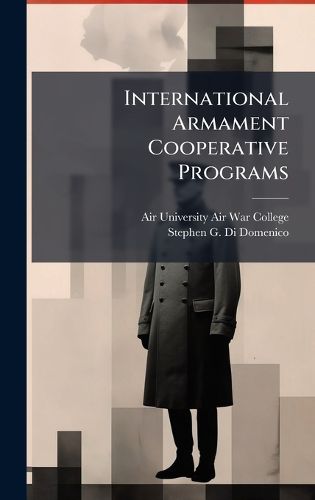Readings Newsletter
Become a Readings Member to make your shopping experience even easier.
Sign in or sign up for free!
You’re not far away from qualifying for FREE standard shipping within Australia
You’ve qualified for FREE standard shipping within Australia
The cart is loading…






This title is printed to order. This book may have been self-published. If so, we cannot guarantee the quality of the content. In the main most books will have gone through the editing process however some may not. We therefore suggest that you be aware of this before ordering this book. If in doubt check either the author or publisher’s details as we are unable to accept any returns unless they are faulty. Please contact us if you have any questions.
The Joint Strike Fighter international program is unique; indeed there is no other example of a U.S. major prime contractor co-developing and co-producing a U.S. combat aircraft with other foreign entities. Consequently, the program provides an excellent model to evaluate in view of the new Department of Defense international acquisition strategy requirements. This paper is a preliminary analysis that seeks to answer the questions: what are the benefits and liabilities of the JSF international acquisition approach thus far, and what are the necessary precursors or conditions that should exist for future international cooperative programs to have the best chance of success? Such answers are relevant given that DoD now looks to international armament cooperative programs as the first option for future weapon systems acquisition strategies. Finally, the paper will identify barriers that are 'hard-wired' into our acquisition regulations, policies and statues that restrict cooperation, fail to take advantage of the global defense industrial market, and are antithetical to our National Security Strategy coalition goals. The paper concludes with recommendations intended to improve the success for future international cooperative initiatives
This work has been selected by scholars as being culturally important, and is part of the knowledge base of civilization as we know it. This work was reproduced from the original artifact, and remains as true to the original work as possible. Therefore, you will see the original copyright references, library stamps (as most of these works have been housed in our most important libraries around the world), and other notations in the work.
This work is in the public domain in the United States of America, and possibly other nations. Within the United States, you may freely copy and distribute this work, as no entity (individual or corporate) has a copyright on the body of the work.
As a reproduction of a historical artifact, this work may contain missing or blurred pages, poor pictures, errant marks, etc. Scholars believe, and we concur, that this work is important enough to be preserved, reproduced, and made generally available to the public. We appreciate your support of the preservation process, and thank you for being an important part of keeping this knowledge alive and relevant.
$9.00 standard shipping within Australia
FREE standard shipping within Australia for orders over $100.00
Express & International shipping calculated at checkout
Stock availability can be subject to change without notice. We recommend calling the shop or contacting our online team to check availability of low stock items. Please see our Shopping Online page for more details.
This title is printed to order. This book may have been self-published. If so, we cannot guarantee the quality of the content. In the main most books will have gone through the editing process however some may not. We therefore suggest that you be aware of this before ordering this book. If in doubt check either the author or publisher’s details as we are unable to accept any returns unless they are faulty. Please contact us if you have any questions.
The Joint Strike Fighter international program is unique; indeed there is no other example of a U.S. major prime contractor co-developing and co-producing a U.S. combat aircraft with other foreign entities. Consequently, the program provides an excellent model to evaluate in view of the new Department of Defense international acquisition strategy requirements. This paper is a preliminary analysis that seeks to answer the questions: what are the benefits and liabilities of the JSF international acquisition approach thus far, and what are the necessary precursors or conditions that should exist for future international cooperative programs to have the best chance of success? Such answers are relevant given that DoD now looks to international armament cooperative programs as the first option for future weapon systems acquisition strategies. Finally, the paper will identify barriers that are 'hard-wired' into our acquisition regulations, policies and statues that restrict cooperation, fail to take advantage of the global defense industrial market, and are antithetical to our National Security Strategy coalition goals. The paper concludes with recommendations intended to improve the success for future international cooperative initiatives
This work has been selected by scholars as being culturally important, and is part of the knowledge base of civilization as we know it. This work was reproduced from the original artifact, and remains as true to the original work as possible. Therefore, you will see the original copyright references, library stamps (as most of these works have been housed in our most important libraries around the world), and other notations in the work.
This work is in the public domain in the United States of America, and possibly other nations. Within the United States, you may freely copy and distribute this work, as no entity (individual or corporate) has a copyright on the body of the work.
As a reproduction of a historical artifact, this work may contain missing or blurred pages, poor pictures, errant marks, etc. Scholars believe, and we concur, that this work is important enough to be preserved, reproduced, and made generally available to the public. We appreciate your support of the preservation process, and thank you for being an important part of keeping this knowledge alive and relevant.